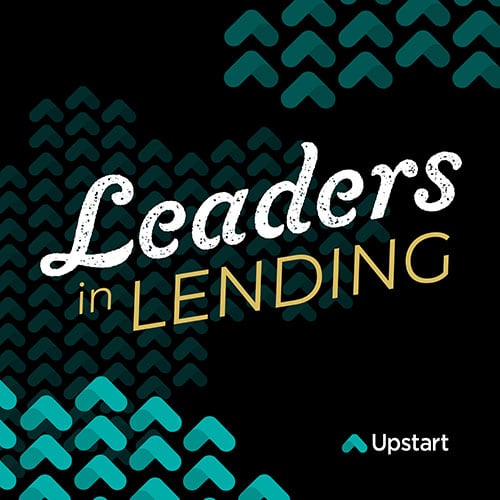Leaders in Lending | Ep. 117
Leveraging Predictive Analytics to Expand Relationships
From his position as Product Manager at Umpqua Bank, Ben Vega joins the show to shed some light on the challenges and benefits of cross-pollinating data and technology, tailoring services to meet unique needs, exploring alternative credit scoring methods and automation, and more.
-modified.png?width=200&height=200&name=Ben%20Vega%20(1)-modified.png)

GUEST SPEAKER
Ben Vega
Ben Vega is a Product Manager for Umpqua Bank focused on Consumer and Small Business Scored Lending. He has been with the bank for over 11 years, previously serving in roles including financial and data analytics. Vega received his BA from George Mason University in Communication and Public Relations.

ABOUT
Umpqua Bank
Umpqua Bank is a publicly traded financial holdings company, headquartered in the Pacific Northwest with 6,000+ employees, which offers banking services to customers throughout the nation. Following the recent merger with Columbia Bank, Umpqua Bank has grown to become a leading western-based regional bank with more than $50B in assets under management and an unwavering commitment to its associates, customers and communities.
Key Topics Covered
- Navigating interest rate sensitivity and the benefits of data cross-pollination
- How wealth management groups help keep operations customer-centric
- Why automation needs a balanced level of human interaction

“We want to have a full relationship, but at the same time, we want to know that [customers] really enjoy the service that they're getting from their commercial partners."


“These alternative credit models are not only seeing lower default rates, but they're able to approve more borrowers that would have been declined.”
EPISODE RECAP & SUMMARY
From his position as Product Manager at Umpqua Bank, Ben Vega joins us to shed some light on the challenges and benefits of cross-pollinating data and technology, tailoring services to meet unique needs, exploring alternative credit scoring methods and automation, and more.
In today's rapidly evolving digital landscapes, finding a sustainable balance between human interaction and digital automation in lending is paramount.
Join us as we discuss:
- Navigating interest rate sensitivity and the benefits of data cross-pollination
- How wealth management groups help keep operations customer-centric
- Why automation needs a balanced level of human interaction
Navigating interest rate sensitivity and the benefits of data cross-pollination
Calculating interest rates means taking care to prepare for multiple scenarios that have diverse outcomes. In Vega’s case, that meant running 16 different scenarios, starting with a base environment — our current economic climate.
“We'll look at what net interest income is going to look like in one year without any movement to rates, then we'll look at what happens if rates go upwards 100 basis points, 200, 300, 400 in a ramp scenario, slowly increasing,” Vega said. “And then also in a shock scenario on the inverse of that — what happens when they go downwards?”
Analyzing interest rates sheds light on month-to-month changes in loan portfolios, possible sensitivities and more based on those scenarios. It pays to prepare, and how better to do so than aiming to get the whole picture?
Data cross-pollination to determine product-consumer fit
More often than not, different departments speak different “languages” regarding storing, organizing and using data. Banking is no exception. For cross-pollination to work, there must be cohesion.
“There isn't some gigantic database where I can run a query or filter on, ‘Give me individual borrowers that have asset sizes of this, but preferably in investments or cash, or let's exclude their primary residence, etc.’ So, we ended up starting with identifying types of commercial loans,” Vega said.
From there, they can identify industry size, location, whether or not they have a wealth management office near where the borrower lives and review personal financial statements and other types of liquidity statements gathered from those borrowers.
The relationship between borrower, lender and account manager plays a key role in using gathered information effectively to predict consumer needs. Sharing insights cross-departmentally can help connect a consumer to the right product quickly and with less confusion.
Without ensuring proper product fit, banks risk losing customers to competitor establishments that can provide the personalized service customers expect.
How wealth management groups help keep operations customer-centric
Wealth management groups play a vital role in underwriting commercial loans by identifying the right customers and tailoring services to meet their needs. That’s where the digital-human dynamic comes into play.
“What we ended up doing is, we partnered with a local company, and we started doing something called next best offer, or, what we dubbed ‘Smart Leads,’” Vega said.
The Smart Leads process automatically tracks transaction types, payments, etc. and finds opportunities for incorporating an additional product that would help the customer increase their success and, most often, save them money.
“Every single night, Smart Leads is going through our processed data, and it's going to start submitting leads to bankers to follow up with customers,” Vega continued.
Why automation needs a balanced level of human interaction
Though Smart Leads provides consistent work with predictive analytics, it would fall flat without the bridge of real people connecting the dots and engaging with customers.
Vega and his team address that balance through their Go-To mobile application, where live representatives chat with customers.
“You see other types of chatbots — AI chatbots — and other banks investing in that. Well, we're saying we want to keep it human,” Vega said. “We want to give you the access you're used to with phone service. But at the same time, we want to make sure you're having a human interaction.”
Through the app, customers can get their questions answered, take care of their day-to-day business and speak with a live person. All of the convenience, none of the depersonalization.
With technology investments, banks can't do it all — but they can take on the projects that will have the biggest positive impact on their customers. To get a clear picture of what that looks like, banks must embrace cross-pollination between digital, human touch and predictive analytics.
Stay tuned for new episodes every week on the Leaders in Lending Podcast.





